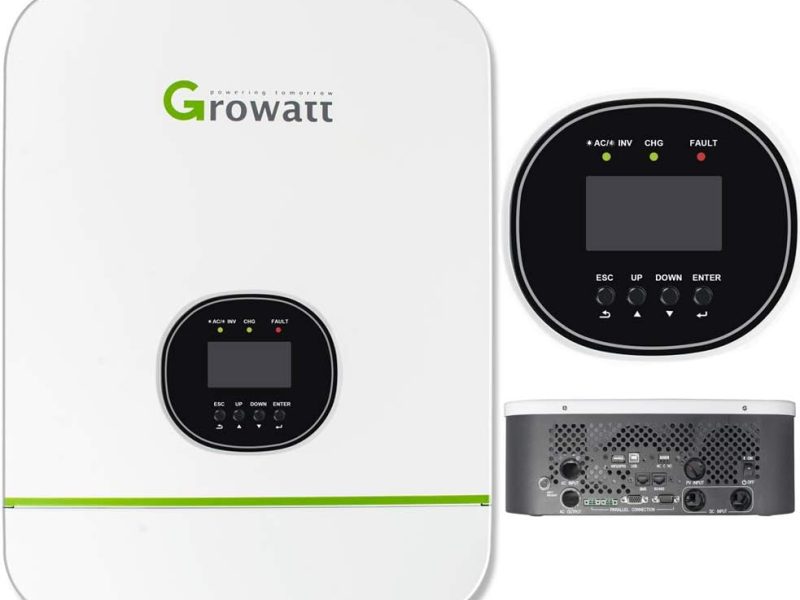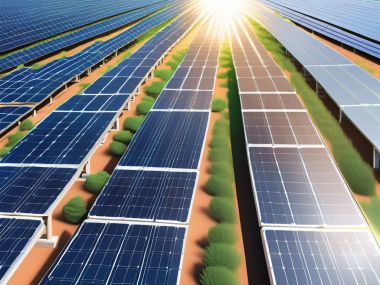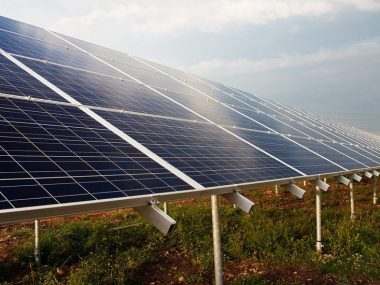What is a solar inverter and how does it work?
The interest in solar power systems has also shot up at amazing rate due to the increased interest in renewable energy sources across the world. The capacity of the sun to power an entire workplace or a home is a huge environmental advantage (think of all the electricity saved!) and is a great use of a resource that we have many hours of each day and many days of every week.
Think of it, when it comes to solar systems, do you actually know the features they are made up of and how they operate? Solar systems consist of solar panels, (or photovoltaic (PV) panels), a solar inverter (super important) and a rack to keep everything working. They may also contain a battery, depending on the system and an electric meter, and the amount and type of panels for each system will depend on the energy output needed. Considering the benefits and the good affect of solar systems, we thought we would put together a little knowledge regarding Solar Inverters, how they operate and what to look for in a good solar inverter, given their importance and benefits.
What is a solar inverter?
Solar Inverter is a crucial component of a solar energy system. Its primary function is to convert the direct current (DC) electricity produced by solar panels into alternating current (AC) electricity, which is used to power household appliances and electrical devices.
Solar panels generate DC electricity when exposed to sunlight through the photovoltaic effect. However, most household appliances and the electricity grid operate on AC power. Therefore, the Solar Inverter plays a vital role in converting the DC electricity from solar panels into AC electricity, ensuring compatibility with standard electrical devices and enabling the integration of solar power into the existing electrical grid.
Solar inverters also typically include additional features such as maximum power point tracking (MPPT), which optimizes the performance of the solar panels by adjusting the voltage and current to maximize power output under varying sunlight conditions. Additionally, some inverters may offer monitoring capabilities, allowing users to track the performance of their solar energy system and identify any issues or inefficiencies.
How does this solar inverter works?
A Solar Inverter works by taking in the variable direct current, or ‘DC’ output, from your solar panels and transforming it into alternating 120V/240V current, or ‘AC’ output. The appliances in your home run on AC, not DC, which is why the solar inverter must change the DC output that is collected by your solar panels. It is just a converter, that convert DC current to AC current.
To be a little more technical, the sun shines down on your solar panels (or photovoltaic (PV) cells), which are made of semiconductor layers of crystalline silicon or gallium arsenide. These layers are a combo of both positive and negative layers, which are connected by a junction. When the sun shines, the semiconductor layers absorb the light and send the energy to the PV cell. This energy runs around and bumps electrons lose, and they move between the positive and negative layers, producing an electric current known as direct current (DC). Once this energy is produced, it is either stored in a battery for later use or sent directly to an inverter (this depends on the type of system you have).
When the energy gets sent to the inverter, it is in DC format but your home requires AC. The inverter grabs the energy and runs it through a transformer, which then spits out an AC output. The inverter, in essence, ‘tricks’ the transformer into thinking that the DC is actually AC, by forcing it to act in a way like AC – the inverter runs the DC through two or more transistors that turn on and off super fast and feed two varying sides of the transformer.
Types of solar inverters
It’s time to look at the different types of Solar Inverters, now that we have known what a Solar Inverter is all about and the way it works, There are 5 different kinds of Solar Inverters, all with varying benefits :
String Inverters:
Also known as central inverters, string inverters are the most common type used in residential and commercial solar installations. They are connected to multiple solar panels wired together in series (or strings). String inverters convert the DC electricity from these strings into AC electricity. They are relatively cost-effective and straightforward to install.
Microinverters:
Microinverters are installed on each individual solar panel, converting the DC electricity directly at the panel level into AC electricity. This design allows for greater flexibility in system design, improved performance under partial shading conditions, and enhanced monitoring capabilities for each panel. However, microinverters are typically more expensive than string inverters on a per-watt basis.
Power Optimizers:
Power optimizers are devices installed at the panel level, similar to microinverters, but they do not convert DC to AC electricity. Instead, they optimize the DC output of each panel before sending it to a central string inverter. This technology maximizes energy harvest, especially in systems with shading or panel mismatch issues, while still benefiting from the cost savings of a central inverter.
Hybrid Inverters:
Hybrid inverters are capable of managing both solar power and energy storage from batteries. They allow users to store excess solar energy generated during the day for use during times when solar production is low or during grid outages. Hybrid inverters are increasingly popular in regions with unreliable grid infrastructure or where energy independence is desired.
Three-phase Inverters:
Three-phase inverters are designed for larger commercial or industrial solar installations where three-phase AC power is required. They can efficiently convert the DC electricity from multiple strings of solar panels into three-phase AC electricity for direct use or grid connection.
Each type of solar inverter has its advantages and limitations, and the choice depends on factors such as system size, shading conditions, budget, and specific energy goals.
What makes a good solar inverter?
Several factors contribute to making a good solar inverter, ensuring efficient operation, reliability, safety, and performance. Here are key features and considerations that contribute to a high-quality solar inverter:
Efficiency
A good solar inverter should have high efficiency ratings, minimizing energy losses during the conversion of DC electricity from solar panels to AC electricity. Look for inverters with high peak efficiency and low standby power consumption to maximize the overall energy yield of the solar energy system.
Maximum Power Point Tracking (MPPT):
MPPT technology enables the solar inverter to continuously track and adjust the operating voltage and current of the solar panels to extract maximum power from varying sunlight conditions. Advanced MPPT algorithms improve energy harvest, especially in partial shading or non-optimal orientations.
Reliability and Durability:
Choose a solar inverter from reputable manufacturers known for producing reliable and durable products. Look for inverters with robust designs, high-quality components, and proven track records of performance and longevity in various environmental conditions.










